南航《矩阵论》第1章
- 格式:ppt
- 大小:9.27 MB
- 文档页数:101
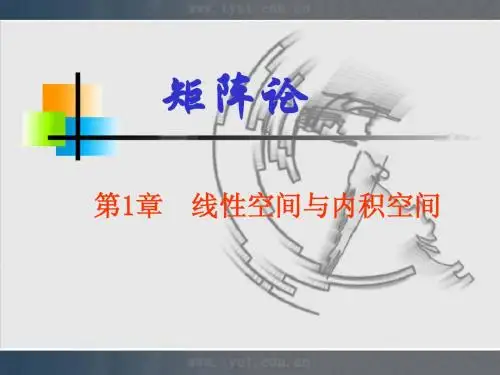
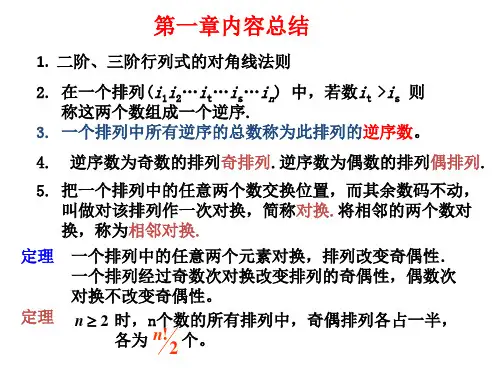
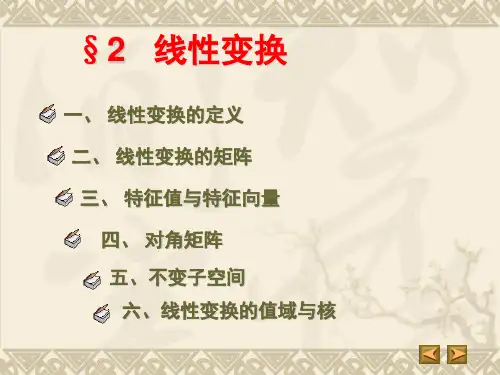
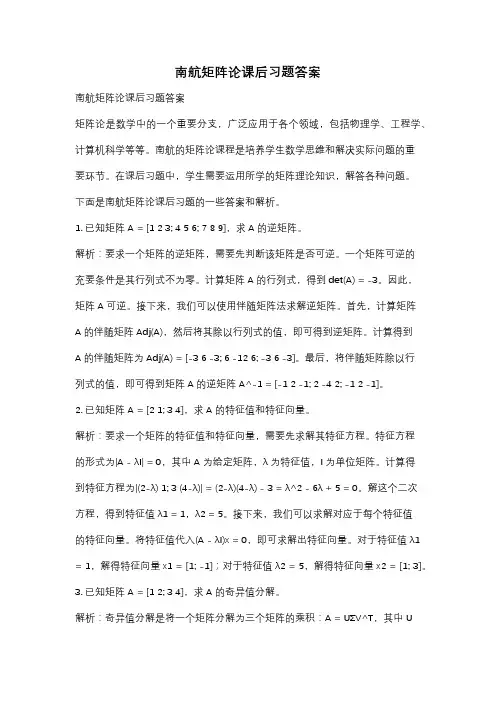
南航矩阵论课后习题答案南航矩阵论课后习题答案矩阵论是数学中的一个重要分支,广泛应用于各个领域,包括物理学、工程学、计算机科学等等。
南航的矩阵论课程是培养学生数学思维和解决实际问题的重要环节。
在课后习题中,学生需要运用所学的矩阵理论知识,解答各种问题。
下面是南航矩阵论课后习题的一些答案和解析。
1. 已知矩阵A = [1 2 3; 4 5 6; 7 8 9],求A的逆矩阵。
解析:要求一个矩阵的逆矩阵,需要先判断该矩阵是否可逆。
一个矩阵可逆的充要条件是其行列式不为零。
计算矩阵A的行列式,得到det(A) = -3。
因此,矩阵A可逆。
接下来,我们可以使用伴随矩阵法求解逆矩阵。
首先,计算矩阵A的伴随矩阵Adj(A),然后将其除以行列式的值,即可得到逆矩阵。
计算得到A的伴随矩阵为Adj(A) = [-3 6 -3; 6 -12 6; -3 6 -3]。
最后,将伴随矩阵除以行列式的值,即可得到矩阵A的逆矩阵A^-1 = [-1 2 -1; 2 -4 2; -1 2 -1]。
2. 已知矩阵A = [2 1; 3 4],求A的特征值和特征向量。
解析:要求一个矩阵的特征值和特征向量,需要先求解其特征方程。
特征方程的形式为|A - λI| = 0,其中A为给定矩阵,λ为特征值,I为单位矩阵。
计算得到特征方程为|(2-λ) 1; 3 (4-λ)| = (2-λ)(4-λ) - 3 = λ^2 - 6λ + 5 = 0。
解这个二次方程,得到特征值λ1 = 1,λ2 = 5。
接下来,我们可以求解对应于每个特征值的特征向量。
将特征值代入(A - λI)x = 0,即可求解出特征向量。
对于特征值λ1 = 1,解得特征向量x1 = [1; -1];对于特征值λ2 = 5,解得特征向量x2 = [1; 3]。
3. 已知矩阵A = [1 2; 3 4],求A的奇异值分解。
解析:奇异值分解是将一个矩阵分解为三个矩阵的乘积:A = UΣV^T,其中U和V是正交矩阵,Σ是对角矩阵。
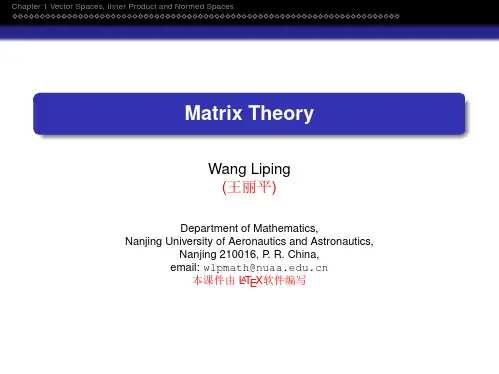
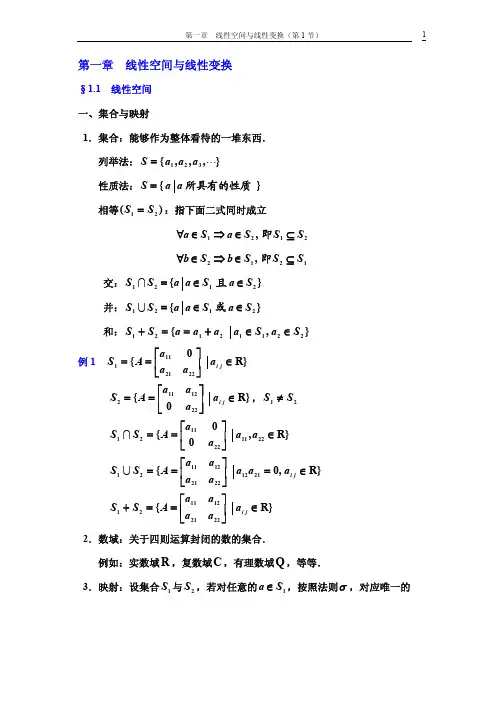
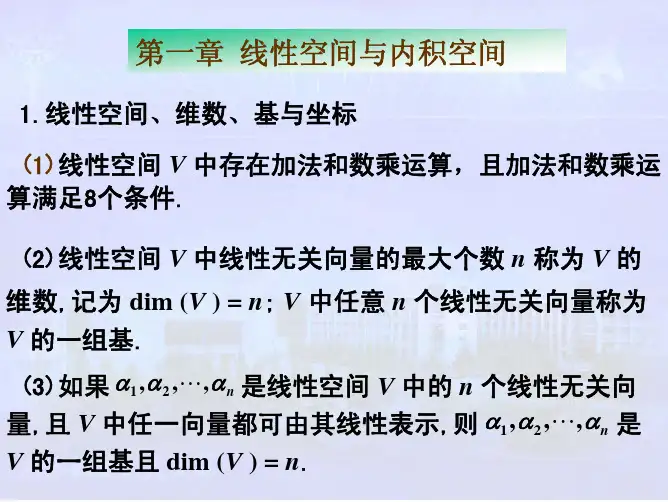
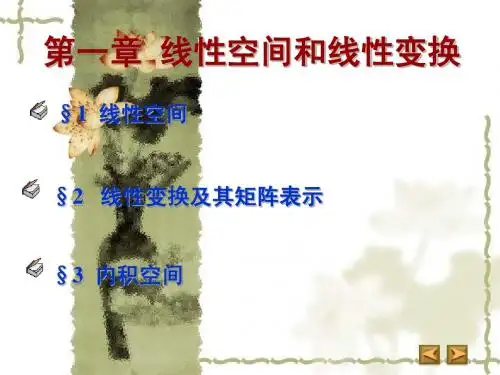

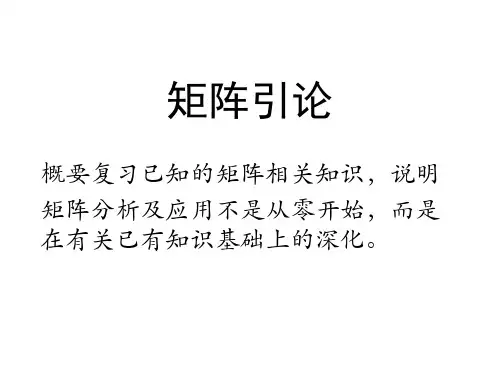

§3 内积空间(欧氏空间与酉空间)一、内积空间的概念二、Cauchy-Schwarz不等式三、内积空间的标准正交基四、内积空间的子空间五、练习解答及提示12一、内积空间的概念内积空间内积空间 设X 为数域K 上的线性空间,映射 .若 ,满足 (1) 正定性 ,且 ;(2) 共轭对称性; (3) 关于第一个变元的线性性,则称 为x 与y 的内积,称 (简称X )为内积空间.若为子线性空间,则称 为子内积空间。
当K 为实数域时称为Euclid 空间,当K 为复数域时称为酉空间。
空间的维数即线性空间的维数。
,:X X K <⋅⋅>×→,,,,x y z X a b K ∀∈∀∈,0x x <>≥,00x x x <>=⇔=,,x y y x <>=<>,,,ax by z a x z b y z <+>=<>+<>,x y <>(,,)X <⋅⋅>M X ⊂(),,M <⋅⋅>(,,)X <⋅⋅>(,,)X <⋅⋅>3一、内积空间一、内积空间的概念的概念 在内积空间 上, ,称 为x 的长度(或范数),当 时称x 为单位向量。
(,,)X <⋅⋅>x X∀∈||||,x x x =<>||||1x =注:1. 对于Euclid 空间,“共轭对称性”即对称性。
2. 对于Euclid 空间,关于第二个变元也是线性,即,,,,,,,,x y z X a b K x ay bz a x y b x z ∀∈∀∈<+>=<>+<>3. 对于酉空间,关于第二个变元为共轭线性,即,,,,,,,x y z X a b K x ay bz ay bz x ∀∈∀∈<+>=<+>,,a y x b z x =<>+<>,,a x y b x z =<>+<>4一、内积空间一、内积空间的概念的概念22212||||||||||n x x x x =+++⋯ (2)按内积 构成一个n 维酉空间。
《矩阵论》复习提纲与习题选讲Chapter1 线性空间和内积空间内容总结:z 线性空间的定义、基和维数;z 一个向量在一组基下的坐标;z 线性子空间的定义与判断;z 子空间的交z 内积的定义;z 内积空间的定义;z 向量的长度、距离和正交的概念;z Gram-Schmidt 标准正交化过程;z 标准正交基。
习题选讲:1、设表示实数域3]x [R R 上次数小于3的多项式再添上零多项式构成 的线性空间(按通常多项式的加法和数与多项式的乘法)。
(1) 求的维数;并写出的一组基;求在所取基下的坐标;3]x [R 3]x [R 221x x ++ (2) 在中定义3]x [R , ∫−=11)()(),(dx x g x f g f n x R x g x f ][)(),(∈ 证明:上述代数运算是内积;求出的一组标准正交基;3][x R (3)求与之间的距离;221x x ++2x 2x 1+−(4)证明:是的子空间;2][x R 3]x [R (5)写出2[][]3R x R x ∩的维数和一组基;二、 设22R ×是实数域R 上全体22×实矩阵构成的线性空间(按通常矩阵的加 法和数与矩阵的乘法)。
(1) 求22R ×的维数,并写出其一组基;(2) 在(1)所取基下的坐标; ⎥⎦⎤⎢⎣⎡−−3111(3) 设W 是实数域R 上全体22×实对称矩阵构成的线性空间(按通常矩阵的加法和数与矩阵的乘法)。
证明:W 是22R ×的子空间;并写出W 的维数和一组基;(4) 在W 中定义内积, )A B (tr )B ,A (T =W B ,A ∈求出W 的一组标准正交基;(5)求与之间的距离; ⎥⎦⎤⎢⎣⎡0331⎥⎦⎤⎢⎣⎡−1221 (6)设V 是实数域R 上全体22×实上三角矩阵构成的线性空间(按通常矩阵的加法和数与矩阵的乘法)。
证明:V 也是22R ×的子空间;并写出V 的维数和一组基;(7)写出子空间的一组基和维数。
Solution Key (chapter 1)#2. TakeS , 2=. But 2S ∉. If 2S ∈, then there are rational numbers a and b , such that2=0a ≠ and 0b ≠.) This will lead to224232a b ab--=The right hand is a rational number and the left hand side is an irrational number. This is impossible. Thus, S is not closed under multiplication. Hence, S is not a field.#13. (a) Denote the set by S . Take 2()p x x x S =+∈, 2()q x x x S =-+∈.Then ()()2p x q x x S +=∉. S is not closed under addition. Hence, S is not a subspace. (Or: The set S does not contain the zero polynomial, hence, is not a subspace.) (b) Denote the set by S .Take 3()1p x x S =+∈, 3()1p x x S =-+∈. Then ()()2p x q x S +=∉. S is not closed under addition. Hence, S is not a subspace.(Or: The set S does not contain the zero polynomial, hence, is not a subspace.)(d) Denote the set by S . Take ()1p x x S =+∈, ()1p x x S =-+∈, ()()2p x q x S +=∉. S is not closed under addition. Hence, S is not a subspace.#15. (c) Denote the set by S . Take ()p x x S =∈. But ()p x x S -=-∉. Thus, the set S is not closed under scalar multiplication. Hence, S is not a subspace.(e) Denote the set by S . Take ()1p x x S =-∈ ()1q x x S =+∈. But ()()2p x q x x S +=∉. S is not closed under addition. Hence, S is not a subspace.#17. Since 12{,,,}u v v v i s span ∈ for each i , all combinations of 12,,,u u u r are also in 12{,,,}v v v s span . Thus, 12{,,,}u u u r span is a subspace of 12{,,,}v v v s span . Therefore, 12dim({,,,})u u u r span ≤ 12dim({,,,})v v v s span .#25. (a) Let 12(,,,)b b b n B = . Then 12(,,,)b b b n AB A A A = .If AB O =, then b 0i A = for 1,2,,i n = . ()b i N A ∈ for 1,2,,i n = . All lineawr combinations of 12,,,b b b n are also in ()N A . Thus, ()()R B N A ⊂. ()R B is a subspace of ()N A .If ()R B is a subspace of ()N A , then for each column b i of B , we must haveb 0i A =. Hence,12(,,,).b b b n AB A A A O ==(b) By part (a), we know that ()R B is a subspace of ()N A . Thus,()dim(())dim(())r B R B N A =≤. By the rank-nullity theorem, we obtain that()()d i m (())(r B r A N A r A n +≤+= #29. Let,A B S∈. Then ()T T T A B A B A B +=+=+, and ()T T kA kA kA ==. S is closedunder addition and scalar multiplication. Thus, S is a subspace ofn n R ⨯Let ,A B K ∈. Then ()()T T T A B A B A B A B +=+=--=-+, and ()()T T kA kA kA ==-. K is closed under addition and scalar multiplication. Thus, K is a subspace ofn n R ⨯The proof of n n R S K ⨯=⊕.Let .n n A R ⨯∈ Then 11()()22T T A A A A A =++-.1()2T A A + is symmetric and 1()2T A A - is anti-symmetric. This show that n n R S K ⨯=+. Next, we show that the sum S K + is a direct sum. If A S K ∈⋂, then we have both T A A = and T A A =-. This will imply that A A =-. Thus, A must be the zero matrix. This proves that the sum S K + is a direct sum.#32. Let ij E denote the matrix whose (,)i j entry is 1, zero elsewhere. For any()m n ij ij A a C ⨯=∈, where ,ij ij a b are real numbers, A can be written as1111n m n mij ij ij ij j i j i A a E b E =====∑∑.This shows that the matrices{|1,2,,,1,2,,} ij ij E i m j n == forms a spanningset form nC⨯. If1111n mn mijijij ij j i j i a Eb E O=====∑∑, then 0ij ij a = for1,2,,i m= ,1,2,,j n = . Thus, we must have 0ij ij a b ==for 1,2,,i m = , 1,2,,j n = . Therefore,{|1,2,,,1,2,,} ij ij E i m j n == forms a basis for m n C ⨯. The dimension is 2mn .。
矩阵论作业答案与提示第一章(P41-P44)8提示:设044332211=+++ααααx x x x ,解得04321====x x x x ,因此4321,,,αααα线性无关.10(1)提示:考虑n 阶反对称矩阵构成的线性空间V .设ij α是处的元素为1,处的元素为-1,而其余元素均为零的n 阶反对称矩阵(),则),(j i ),(i j j i <n n n 2n ,123112,,,,,,,−ααααL L L A ij 线性无关.又若V a α∈=)(,则有∑≤<≤=nj i ijija A 1α,即A 可以由n n n n ,1223112,,,,,,,−αααααL L L 线性表示,因此.2)1(12)2()1()dim(−=+++−+−=n n n n V L 同理,若V 是n 阶对称矩阵构成的线性空间,则.2)1()dim(+=n n V 12提示:设A x x x x =+++44332211αααα,解得1,1,3,24321−===−=x x x x ,因此A 在基4321,,,αααα下的坐标是.)1,1,3,2(T −−18提示:(1)对任意P ,,∈∈k W Y X ,直接验证W kX Y X ∈+,.(2)在中取向量W )(i i e diag =α,其中表示第i 个分量为1,其余分量为零的n 维行向量,,则i e n i ,,2,1L =n ααα,,,21L 线性无关.又若,则由W x X n n ij ∈=×)(XA AX =得到,即)(0j i x ij ≠=),,,(2211nn x x x diag X L =.于是∑==ni i ii x X 1α,即X 可由n ααα,,,21L 线性表示.因此n ααα,,,21L 是的一组基,而.W n W =)dim(19(1)提示:设},{},,{212211ββααspan V span V ==,则},,,{212121ββααspan V V =+.由于121,,βαα是向量组2121,,,ββαα的极大线性无关组,所以,而3)dim(21=+V V 121,,βαα是21V V +的一组基.接下来,求的维数和基.设21V V I 21V V I ∈α,则有24132211ββαααk k k k −−=+=,从而024132211=+++ββααk k k k .解这个向量方程得到:,,3,4,4321k k k k k k k k =−=−==其中k 是任意常数.此时,)4,3,2,5()3()4(2121T k k k −−−=−=−=ββααα即.于是})4,3,2,5{(21T span V V −−−=I 1)dim(21=V V I ,而是的一组基. T )4,3,2,5(−−−21V V I 21提示:设,)1,,1,1(,)1,1,0,,0(,)0,,1,1,0(,)0,,0,1,1(121Tn T n T T L L L L =−=−=−=−αααα则},,,{},{},,,,{112121211n n n n span V V span V span V ααααααα−−=+==L L .由于n n ααα,,,11−L 线性无关,所以它们构成n R 的一组基,从而.注意到,于是. n R V V =+21}0{21=V V I n R V V =+⋅2124提示:在V 中取向量,1100,0010,0011321⎟⎟⎠⎞⎜⎜⎝⎛=⎟⎟⎠⎞⎜⎜⎝⎛=⎟⎟⎠⎞⎜⎜⎝⎛=ααα 则321,,ααα线性无关,且321αααc b a c c b a a ++=⎟⎟⎠⎞⎜⎜⎝⎛+, 从而,而3)dim(=V 321,,ααα是V 的一组基.定义映射如下:3:R V →σ,)(⎟⎟⎟⎠⎞⎜⎜⎜⎝⎛=⎟⎟⎠⎞⎜⎜⎝⎛+c b a c c b a a σ 由于是向量在基T c b a ),,(⎟⎟⎠⎞⎜⎜⎝⎛+=c c b a a α321,,ααα下的坐标,所以σ是V 到3R 的同构映射.27(1)提示:首先将321,,ααα化为标准正交向量组,得到.)2,1,1,2(101,)2,3,3,2(261,)1,2,2,1(101321T T T −−−=−=−=εεε其次,解方程组,求得基础解系,将其单位化,得0321===x x x TT T εεεT )3,2,2,3(4−=αT )3,2,2,3(2614−=ε,则4321,,,εεεε是V 的标准正交基.最后,直接计算,得到311010εεα+=. (2)解答:212321362),31(4103,26,21εεαεεε+=−===x x .。
Solution Key (chapter 1)Exercise 2.The show that this set is not closed under multiplication.TakeS ,2=.But 2S ∉.If 2S ∈rational numbers a and b ,such that2=It is clear that 0a ≠and0b ≠.)This will 224232a b ab --=The right hand is a rational number and the left hand side is an irrational number.This is impossible.Thus,S is not closed under multiplication.Hence,S is not a field.Exercise 7.zx y x +=+)()()()(z x x y x x ++-=++-z x x y x x ++-=++-])[(])[(z 0y 0+=+zy =Exercise 12It is a vector space.A1:A2:,Hence,A3:The existence of the zero element .The zero element must satisfy that for any ,That is for any ,.We obtain that the zero element is A4:The existence of additive inverse.For each ,its additive inverse is ,since.(Note that is the zero element of )M1:M2:M3:M4:Exercise 13.(a)No,it is not a subspace.Denote the set by S .Take 2()p x x x S =+∈,2()q x x x S =-+∈.Then ()()2p x q x x S +=∉.S is not closed under addition.Hence,S is not a subspace.(Or:The set S does not contain the zero polynomial,hence,is not a subspace.)(b)Denote the set by S .(b)Take 3()1p x x S =+∈,3()1p x x S =-+∈.Then ()()2p x q x S +=∉.S is not closed under addition.Hence,S is not a subspace.(Or:The set S does not contain the zero polynomial,hence,is not a subspace.)(c)Yes,it is a subspace.Check that this set is closed under addition and scalar multiplication.(d)No,it is not a subspace.Denote the set by S .Take ()1p x x S =+∈,()1p x x S =-+∈,()()2p x q x S +=∉.S is not closed under addition.Hence,S is not a subspace.Exercise 15.(a)Yes,it is a subspace.Check that this set is closed under addition and scalar multiplication.(b)Yes,it is a subspace.Check that this set is closed under addition and scalar multiplication.(c)Denote the set by S .Take ()p x x S =∈.But (1)()p x x S -=-∉.Thus,the set S is not closed under scalar multiplication.Hence,S is not a subspace.(d)Yes,it is a subspace.Check that this set is closed under addition and scalar multiplication.(e)Denote the set by S .Take ()1p x x S =-∈()1q x x S =+∈.But ()()2p x q x x S +=∉.S is not closed under addition.Hence,S is not a subspace.Exercise 17.Since 12{,,,}u v v v i s span ∈ for each i ,all combinations of 12,,,u u u r are also in12{,,,}v v v s span .Thus,12{,,,}u u u r span is a subspace of 12{,,,}v v v s span .Therefore,12dim({,,,})u u u r span ≤ 12dim({,,,})v v v s span .Exercise 19By Taylor expansion formula()110(1)()32(1)!j n n j j f f x x x j --==+=-∑22(1)(2)512(1)(1)(1)2!n n n x x --=⋅+-⋅-+-+ 12(1)(2)()(1)2(1)!j n n n n j x x j ----+-++- The coordinate vector is 2(1)(2)2(1)(2)()5,2(1),,,,,2)Tn n n n n j n ------ (Exercise 22Use the definition of the transition matrix.111011001⎛⎫ ⎪ ⎪ ⎪⎝⎭Exercise 25.(b)Let 12(,,,)b b b n B = .Then 12(,,,)b b b n AB A A A = .If AB O =,then b 0i A =for 1,2,,i n = .()b i N A ∈for 1,2,,i n = .All linear combinations of 12,,,b b b n are also in ()N A .Thus,()()R B N A ⊂.()R B is a subspace of ()N A .If ()R B is a subspace of ()N A ,then for each column b i of B ,we must haveb 0i A =.Hence,12(,,,).b b b n AB A A A O == (b)By part (a),we know that ()R B is a subspace of ()N A .Thus,()dim(())dim(())r B R B N A =≤.By the rank-nullity theorem,we obtain that ()()dim(())()r B r A N A r A n+≤+=Exercise 26.(a)Hint:First,show that each column vector of C is a linear combination of the column vectors of A.Then,linear combinations of the column vectors of C are linear combinations of the column vectors of A.(b)Hint:First,show that each row vector of C is a linear combination of the row vectors of B.Then,linear combinations of the row vectors of C are linear combinations of the row vectors of B.(c)By (a)and (b),()dim(())dim(()()rank C R C R A rank A =≤=And ()dim(())dim(())()T rank C R C R B rank B =≤=Thus,()min{(),()}rank C rank A rank B ≤Exercise 27.(a)Hint:The column vectors of C are linearly independent if and only if the system 0x C =has only the trivial solution (the zero solution).If ()0x AB =,then ()0x A B =.x B must be zero since the column vectors of A are linearly independent.Thar is,0x B =.Since the column vectors of B are linearly independent,x must be zero.(b)Hint:T T T C B A =.Column vectors of T A are linearly independent.Column vectors of T B are linearly independent.The row vectors of C are linearly independent if and only if the column vectors of T C are linearly independent.Then apply part(a).Exercise 29.Let ,A B S ∈.Then ()T T T A B A B A B +=+=+,and ()T T kA kA kA ==.S is closed under addition and scalar multiplication.Thus,S is a subspace of n nR ⨯Let ,A B K ∈.Then ()()T T T A B A B A B A B +=+=--=-+,and ()()T T kA kA kA ==-.Kis closed under addition and scalar multiplication.Thus,K is a subspace of n n R ⨯The proof of n n R S K ⨯=⊕.Let .n n A R ⨯∈Then 11()()22T T A A A A A =++-.1()2T A A +is symmetric and 1()2T A A -is anti-symmetric.This show that n n R S K ⨯=+.Next,we show that the sum S K +is a direct sum.If A S K ∈⋂,then we have both TA A =and TA A =-.This will imply that A A =-.Thus,A must be the zero matrix.This proves that the sum S K +is a direct sum.Exercise 32.Let ij E denote the matrix whose (,)i j entry is 1,zero elsewhere.ij F denote the matrix whose (,)i j entry is 1-,zero elsewhere.Forany ()m n ij ij A a C ⨯=+∈,where ,ij ij a b are real numbers,A can be written as1111n m n mij ij ij ij j i j i A a E b F =====+∑∑∑∑.This shows that the matrices {,|1,2,,,1,2,,} ij ij E F i m j n == forms a spanning set for m n C ⨯.If 1111n m n m ij ij ij ij j i j i a E b F O ====+=∑∑∑∑,then 0ij ij a =for 1,2,,i m = ,1,2,,j n = .Thus,we must have 0ij ij a b ==for 1,2,,i m = ,1,2,,j n = .Therefore,{,|1,2,,,1,2,,} ij ij E F i m j n == forms a basis for m nC ⨯.Thedimensionis 2mn .Note that,all coefficients of linear combinations must be real numbers because theunderlying field is the real number field.。